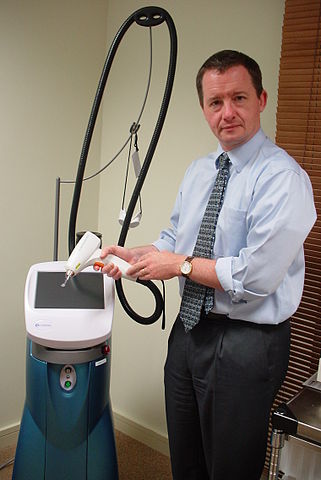Dermatology Lasers - How Do They Work?
On Jun 17, 2014
Introduction: Lasers and Dermatology
Lasers were introduced into dermatology half a century ago. Since then, dermatologists have adapted this groundbreaking technology for an increasing number of medical and cosmetic applications, from vascular and pigmented skin lesions to cosmetic hair removal and resurfacing. This article will provide an introduction to how lasers work, which lasers are most commonly indicated, and what safety concerns you need to remember.
How Do Lasers Work?
A laser is a device that emits a special type of amplified light. Dermatologists use lasers to treat skin conditions by customizing certain perimeters including wavelength, pulse duration, and fluence.

Most notably, lasers are classified by what wavelengths they produce. Longer wavelengths penetrate deeper to the dermal layer, while shorter wavelengths target more superficial epidermal structures. In addition, our skin contains special molecules called chromophores that absorb different wavelengths of light. Examples of chromophores include hemoglobin (in our blood cells), melanin (component of our skin color), and tattoo pigment. Dermatologists match the wavelengths produced by lasers to the wavelengths absorbed by the major chromophore in the skin lesion.
Another important setting on lasers is its fluence, or the energy density. The fluence must be set above a threshold of energy required to target lesions within a set amount of time. This time is the pulse duration; shorter pulses (measured in nanoseconds) target smaller structures such as tattoo pigment or melanosomes, while longer pulses (measured in milliseconds) destroy larger structures including capillaries and hair follicles. By optimizing these laser settings, dermatologists can target treatment of unwanted skin lesions and limit damage to the surrounding tissue.
To learn more about which lasers are available, please read our upcoming article What Dermatology Laser Should You Use?
References
1. Bolognia, JL, Jorizzo, J, Rapini R, Dermatology 2nd edn, 2007. 2. Anderson RR: In: Arndt KA, Dover JS, Olbricht SM, ed. Lasers in cutaneous and aesthetic surgery, Philadelphia: Lippincott-Raven; 1997:25-51.


Comments
Leave a Comment